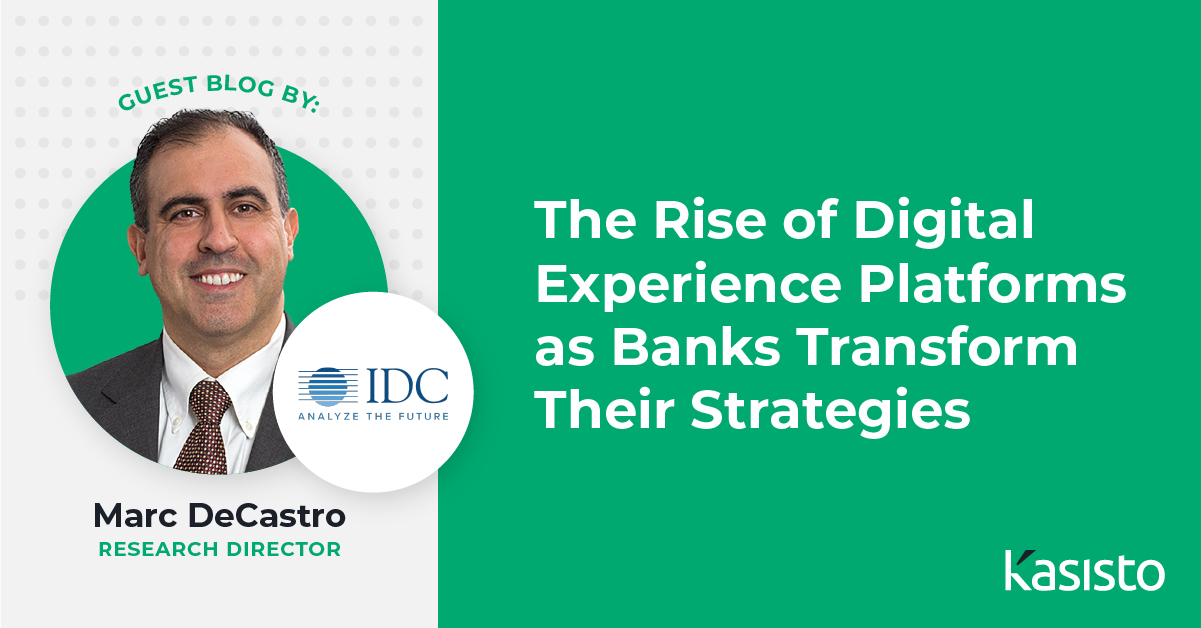The banking world has faced disruption in the past, and some survived, some failed, and some thrived. The adage of lead, follow, or get out of the way comes to mind as banks look at their strategy for successful digital transformation projects within the new digital economy. The barriers to success have been steadfast—those that divide the digitally challenged banks from the digitally native. For many banks, those barriers are the business models and manual processes that are sitting on legacy platforms with a bolted-on interface that creates a barely acceptable digital experience for the customer but doesn’t accrue the true benefits of being digitally transformed.
Modernization is a necessary component for digital transformation in banking. It is also essential to remain competitive, to help decrease operational costs, and to improve digital banking customer experience. The trend continues to move away from point solutions and towards solutions that have taken a platform approach, which provides more agility and can adapt more rapidly to future technological advances. While the leaders in digital transformation, as well as Silicon Valley’s tech giants, today tend to be more digitally native organizations, mostly outside of the banking industry, an increasing number of traditional financial institutions are embracing the digital bank concept and technology to take advantage of today’s platform-driven solutions.
Large-scale projects for transformation can often take months, if not years, and payback periods can make projects unappealing. However, traditional banking business models are being threatened by excessive operational costs and high inefficiency ratios while being disrupted by digital banking products and platforms. Thus, forcing them to have to rapidly transform and innovate. Fortunately, the following industry drivers are shortening payback periods, allowing banks to jump in:
· The concept of true Open Banking, and development of API’s, microservices and componentization allows banks to digitally transform on a more granular scale, often achieving shorter time to market and more immediate results and introducing Banking-as-a-Service capabilities
· Many technology providers and fintechs have matured over this period of innovation and have gone away from trying to poach banks’ customers to instead providing platforms that allow banks of all sizes access to their technology at scale.
· Ecosystems are being built that are industry specific allowing economies of scale for regulatory and compliance concerns.
· Artificial intelligence, machine learning and digital banking customer experience are helping to provide even further opportunities not only to improve efficiencies, but to find new revenue opportunities.
· Data and analytics are at the heart of digital transformation in banking, especially when it comes to improving the overall customer experience.
Digital Transformation in Banking: The Sharpening of Self-Service
One area of focus for transformation is around customer service and experience. Banks have provided customers with self-service tools for decades, starting with the ATM and now with mobile banking apps. Self-service tools are important when attracting the next generation of customers who are not only digitally savvy but also demand solutions that give them the same experience, personalization, and advice they get from other consumer companies. For example, calling into a call center usually becomes a customer’s last resort, and they are often confronted with confusing options and simply want to speak to someone regarding their unique (so they think) circumstances. This is where the role of virtual assistants begins to provide more value now than ever.
These virtual assistants can go beyond simply replicating the frustrating voice-response systems and provide actionable advice on financial well-being. Thanks to advances in natural language user interfaces, intelligent virtual assistants can now provide levels of near-human engagement, eliminating the awkward and often frustrating miscommunication most customers have experienced with generic and simple chatbots.
In addition, the ability to pick up on industry specific language and terminology—like the 12,000 different ways someone can ask for their balance— on the channel of choice, has become critically important in providing a seamless experience and eliminating users’ frustration. “What is my balance?” “What can I spend?” “How much cheddar do I have?” These are all ways of asking the same thing, and they need the same response. By offering a multi-modal (text, speech, touch) conversational virtual assistant, a new and digitally transformative customer experience for self-service has emerged.
Advice for Digital Banking Platform Buyers
Digital transformation can be viewed as a large-scale, long-term project that can be risky and costly. However, it doesn’t have to be that way. Firms should explore the benefits of truly open and extensible platforms while keeping a close eye on inherent risks. There is the risk, for instance, of some platforms being too open, which means that much customization will be required, thus longer development cycles and missed opportunities. There also are risks in choosing a solution too “out of the box” which won’t provide flexibility in customization. It’s important to find a balanced solution – one that can provide significant out-of-the-box standardization while still being able to customize and scale over time. Platform solutions offer a more agile approach to addressing a transformation strategy by providing faster time to market, return on investment, and providing the flexibility to adapt to changes in technology and market conditions.

